
Men's sneakers - a complete guide to styles, colors and styling
Today, sneakers are an inseparable element of men's wardrobe - from casual styles to smart casual. Get to know the history of these iconic shoes, find out what types of sneakers there are, how to match them to different outfits and how to care for them so that they last as long as possible.
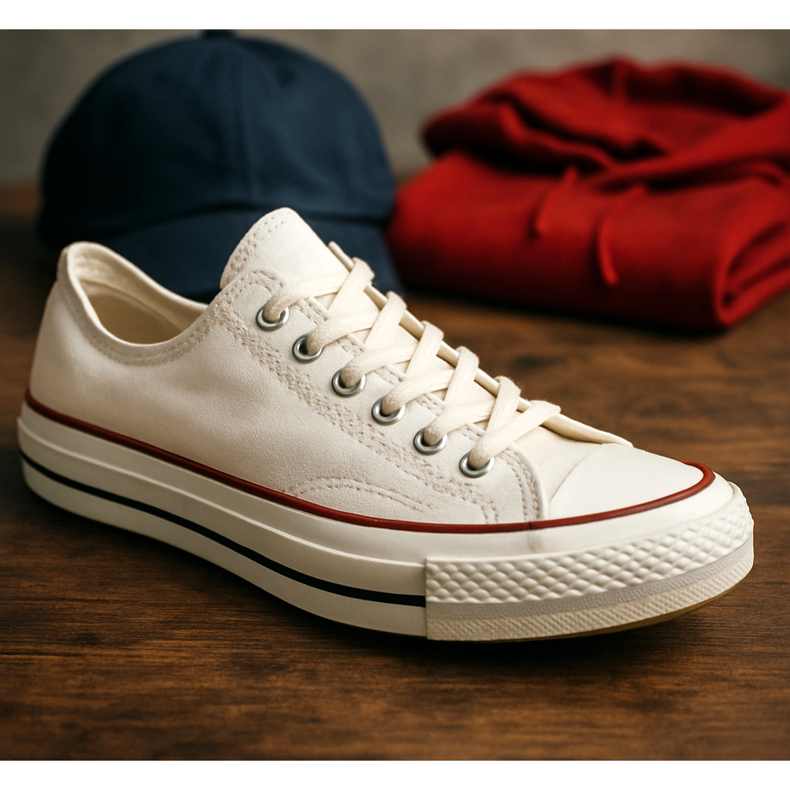
The history of sneakers - from sports to streetwear
Sneakers are shoes that have won the hearts of people all over the world - from professional athletes to street fashion enthusiasts. But do you know where they got their name and how they have evolved over the decades?
The word sneaker comes from the verb to sneak. The name originated in the late 19th century, when rubber soles allowed for quiet movement - unlike the noisy, hard-soled leather shoes. The first models of sneakers appeared as sports footwear, but quickly crossed the boundaries of fields and courts.
In the 1950s and 1960s, sneakers became a symbol of youth rebellion, and in the following decades - an element of hip-hop, skate and high fashion culture. Today it is one of the most universal elements of men's wardrobe.
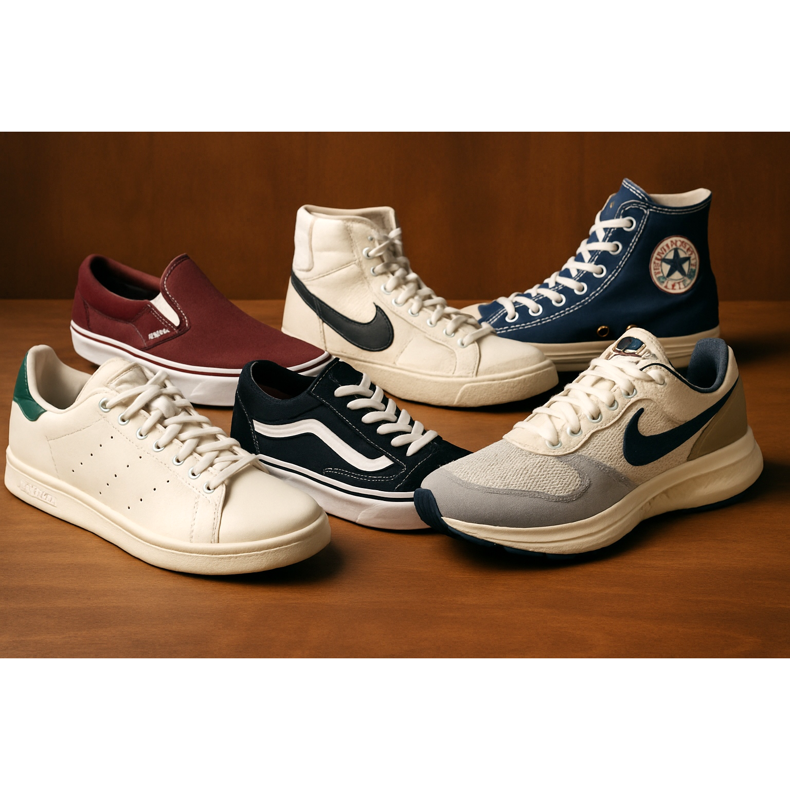
Types of Sneakers - Style Guide
Low-top sneakers
Classic low sneakers - the most universal model. They reveal the ankle, so they go perfectly with jeans, chinos or even smart casual suits. Examples: Adidas Stan Smith, Nike Air Force 1 Low, Converse Chuck Taylor.
High-top sneakers
High sneakers reaching above the ankle. They offer better support and add character to the styling. They are perfect for autumn and winter. Examples: Nike Air Jordan 1, Converse Chuck 70 High, Vans Sk8-Hi.
Running shoes
Running shoes designed for maximum cushioning and support. Today, often worn casually. Examples: Nike Air Max, Adidas Ultraboost, New Balance 990.
Basketball sneakers
Basketball shoes with strong ankle support and a solid sole. Icons of sneaker culture. Examples: Air Jordan, Nike LeBron, Adidas Harden.
Tennis sneakers
Minimalist, often completely white tennis shoes. Elegant and versatile. Examples: Adidas Stan Smith, Nike Court, K-Swiss.
Skate shoes
Flat, durable shoes designed for skaters. They are characterized by a solid construction and a grippy sole. Examples: Vans Old Skool, Nike SB Dunk, DC Shoes.
Slip-on sneakers
Sneakers without laces - comfortable, casual, perfect for summer. Examples: Vans Slip-On, Toms, sports espadrilles.
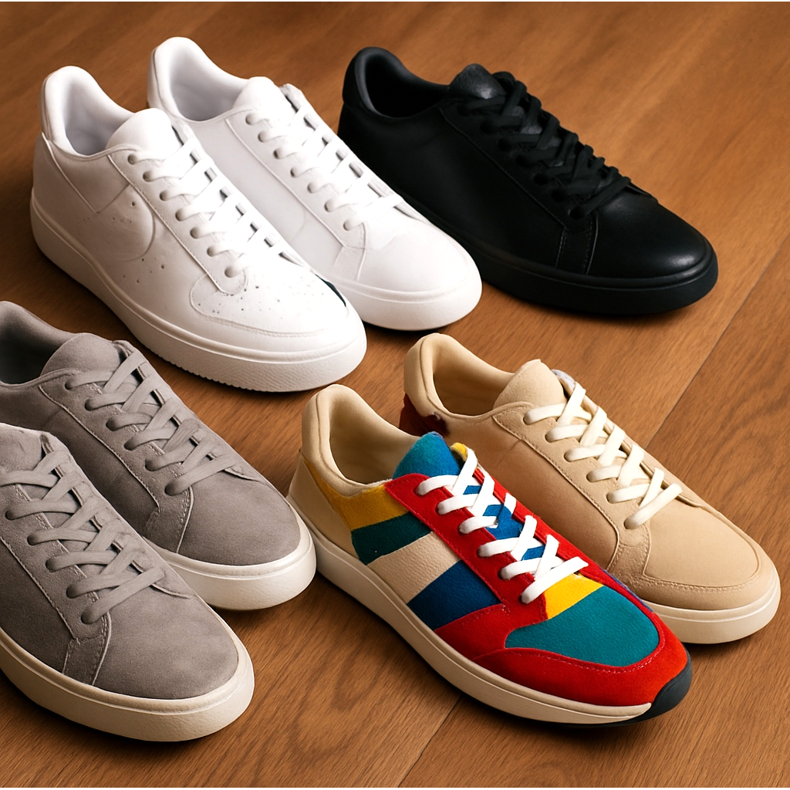
Sneaker colors - how to choose them for your wardrobe?
White sneakers
This is the absolute basis of a men's wardrobe. White, minimalist sneakers go with everything - from jeans to suits. They are clean, fresh and versatile. Must-have: white Adidas Stan Smith, Nike Air Force 1, Common Projects Achilles Low.
Black sneakers
Second basic pair. Black sneakers are more practical (less visible dirt) and are easier to match with darker winter styles. They look good with black jeans, cargo pants or chinos.
Gray and beige sneakers
Neutral colors add subtlety and are an ideal alternative to white. They match perfectly with earth tones and autumn color palettes.
Colorful sneakers
Strong colors (red, blue, green) can be the focal point of an outfit, but they require skill. Use them as an accent in subdued outfits.

What to wear sneakers with?
Jeans
The most natural combination. Both slim fit and regular fit look great with sneakers. Roll up the legs to reveal your shoes and add a casual touch.
Chinos
Elegant and comfortable - chinos in beige, navy blue or olive go perfectly with minimalist sneakers. This smart casual combination is perfect for work and meetings.
Joggers
Sporty style - joggers with ankle cuffs accentuate sneakers and create a consistent streetwear look.
Shorts
In summer, sneakers look good with short pants - both jeans and fabric. Avoid socks that are too long - choose invisible socks.
Suits (smart casual)
In less formal environments, you can wear sneakers with a suit. Choose minimalist, single-color models (white or black) and a fitted suit in navy blue or gray.
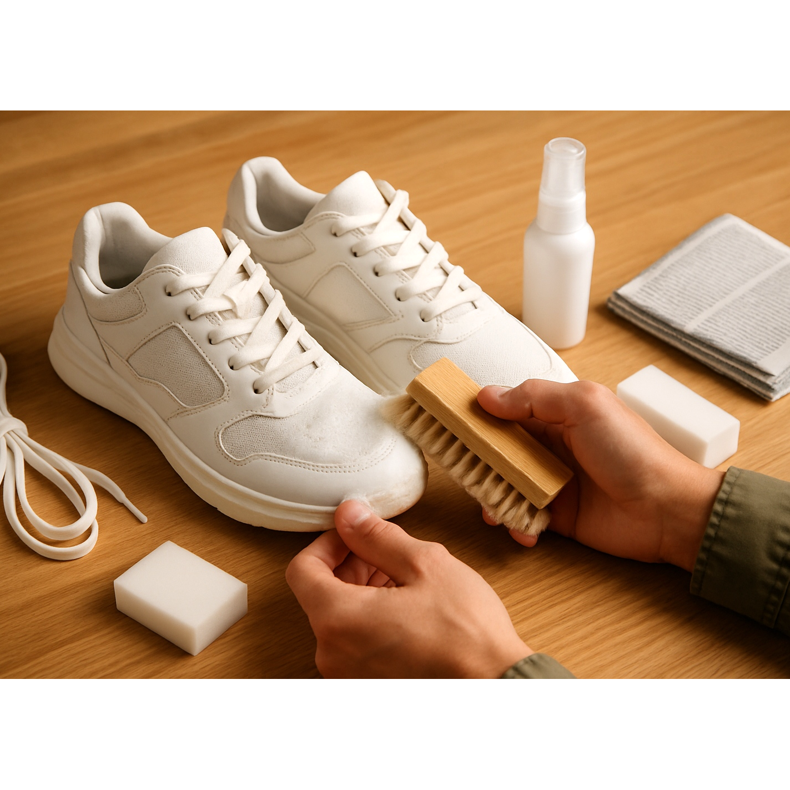
How to take care of sneakers?
Regular cleaning
Don't wait until your sneakers are very dirty. Clean them regularly with a soft brush and mild soap. For white soles, use a magic sponge or toothpaste.
Machine wash - carefully
Some sneakers can be washed in a washing machine (at a low temperature, in a bag or pillowcase), but always check the manufacturer's recommendations. Remove laces and insoles before washing.
Drying
Never dry your sneakers on a radiator or in a dryer - you will destroy the glue and deform the material. Stuff them with newspaper and leave them in a ventilated place.
Impregnation
Impregnate sneakers made of textile and suede materials to protect them against water and dirt.
Storage
Keep your sneakers in a dry place, preferably in their original boxes or on special shelves. Avoid direct sunlight, which can bleach the colors.
Rotation
Don't wear the same pair every day - give your shoes time to dry and recover.
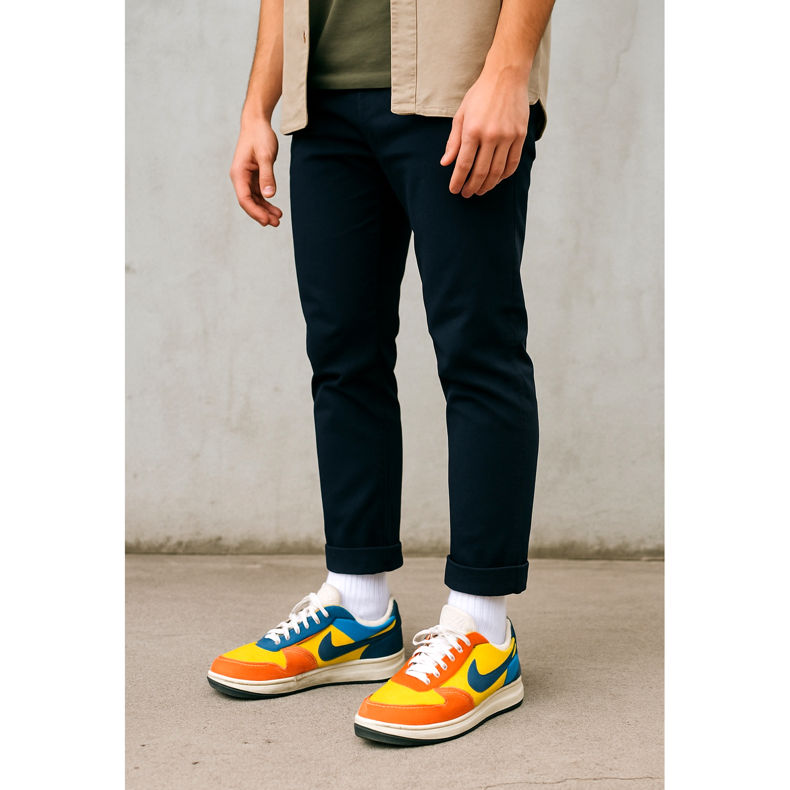
The most common mistakes when wearing sneakers
Wearing them for any occasion
Sneakers are casual - not suitable for weddings, formal business meetings or celebrations requiring a dress code.
Wearing dirty sneakers
Neglected, dirty shoes ruin any styling. Clean them regularly.
Too many colors at once
Colorful sneakers are a strong accent - the rest of the styling should be subdued.
Wrong proportions
Massive chunky sneakers can overwhelm your figure when combined with too narrow pants. Keep your balance.
Wearing socks peeking out from under short pants
Short no-show socks are a better choice in summer - long white socks are a fashion faux pas.

Summary
Sneakers are not just shoes - they are culture, lifestyle and a form of self-expression. From its sporting beginnings to its current place in high fashion, sneakers have proven their universality and timelessness.
By investing in two or three well-selected pairs - white, black and optionally colored - you will build a solid base for many styles. Remember about regular maintenance and appropriate adjustments to the occasion.
Sneakers mean comfort, style and unlimited possibilities - wear them with confidence and enjoy every step.